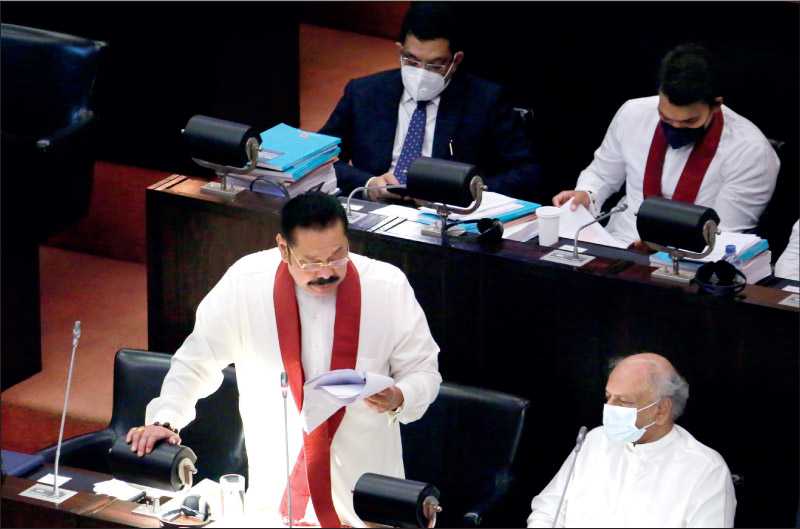Saturday Mar 15, 2025
Saturday Mar 15, 2025
Friday, 4 December 2020 00:00 - - {{hitsCtrl.values.hits}}

 The Government is openly advocating and encouraging the exporters to improve their export performances and talk big about offering a concessionary rate of Income Tax at 14% for export trade. This is just one side of the coin.
The Government is openly advocating and encouraging the exporters to improve their export performances and talk big about offering a concessionary rate of Income Tax at 14% for export trade. This is just one side of the coin.
As per the recent Budget presented and passed, the exporters will have to pay an additional 1.25% of their export turnover as additional levies, which is a huge impact and negates the concessions offered. Income Tax is payable on the bottom line profits of an organisation, whereas a levy on turnover is an upfront charge on the organisation whether it has earned any profits or not, and will also result in adverse impact on the cashflow management of exporters.
The final result on this would be that the exporters will end up paying an effective tax of above 25% rather than falling into a concessionary rate of 14%.
Given below is an example to illustrate this point.
Take the case of an export company which has a turnover of Rs. 100 m and a net profit of 12.5% of turnover.
Under present fiscal regulations:
Turnover: Rs. 100,000,000
Net Profit: 12,500,000
Income Tax thereon at 14%: 1,750,000
If a levy of 1.25% is imposed and allowed as a tax deduction
Turnover: Rs. 100,000,000
Net Profit: 12,500,000
Less 1.25% Levy on TO 1,250,000: 11,250,000
Income tax thereon at 14%: Rs. 1,575,000
Add 1.25% Levy: 1,250,000
Total Tax and Levy: Rs. 2,825,000
This is an effective rate of 25.11% of net profit
If a levy of 1.25% is imposed and not allowed as a tax deduction
Turnover: Rs. 100,000,000
Net Profit: 12,500,000
Income tax thereon at 14%: Rs. 1,750,000
Add 1.25% Levy: 1,250,000
Total Tax and Levy: Rs. 3,000,000
This is an effective rate of 24% of net profit
This is a typical case of the Government applying brakes of the engine of growth.
Out of the proposed 1.25% levy 1% is payable to SLECIC and the purpose and benefits if any is not mentioned anywhere in the Budget. If an exporter needs to obtain a cover under SLECIC for any of their shipments, the exporter is free to obtain it from SLECIC (if they are prepared to cover the buyer and or the country, very often they don’t) by paying a premium. Other than the export credit insurance, the cargo is insured either by the buyer or the shipper as per the terms of trade.
On the other hand, if the 1% levy is payable to SLECIC as an insurance premium, the latter will be liable to honour any claim covering any country or buyer, since as per the Insurance Law, a premium is charged to cover a specific risk and by charging a premium SLECIC would in fact be duty bound to honour claims pertaining to any buyer or country.
The authorities should spell out in detail the scheme and the benefits if any that would be available to the exporters under this plan.
D.G. Wimalasuriya
Colombo 05
Discover Kapruka, the leading online shopping platform in Sri Lanka, where you can conveniently send Gifts and Flowers to your loved ones for any event including Valentine ’s Day. Explore a wide range of popular Shopping Categories on Kapruka, including Toys, Groceries, Electronics, Birthday Cakes, Fruits, Chocolates, Flower Bouquets, Clothing, Watches, Lingerie, Gift Sets and Jewellery. Also if you’re interested in selling with Kapruka, Partner Central by Kapruka is the best solution to start with. Moreover, through Kapruka Global Shop, you can also enjoy the convenience of purchasing products from renowned platforms like Amazon and eBay and have them delivered to Sri Lanka.
Discover Kapruka, the leading online shopping platform in Sri Lanka, where you can conveniently send Gifts and Flowers to your loved ones for any event including Valentine ’s Day. Explore a wide range of popular Shopping Categories on Kapruka, including Toys, Groceries, Electronics, Birthday Cakes, Fruits, Chocolates, Flower Bouquets, Clothing, Watches, Lingerie, Gift Sets and Jewellery. Also if you’re interested in selling with Kapruka, Partner Central by Kapruka is the best solution to start with. Moreover, through Kapruka Global Shop, you can also enjoy the convenience of purchasing products from renowned platforms like Amazon and eBay and have them delivered to Sri Lanka.